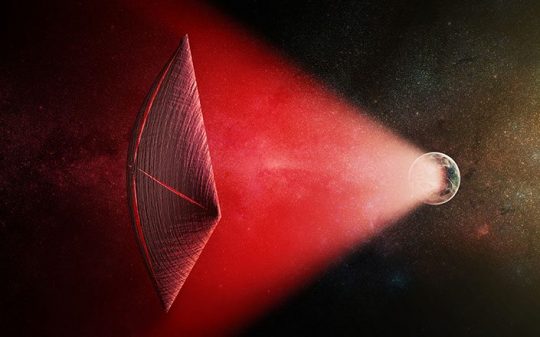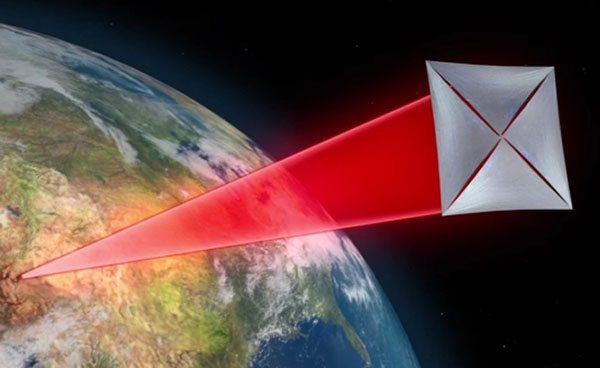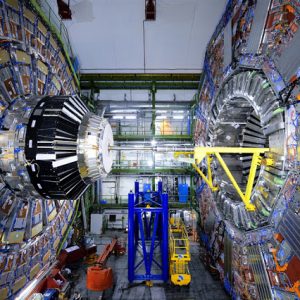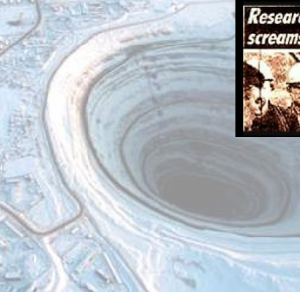A new study claims that bizarre light flashes could be used by advanced aliens to accelerate their interstellar UFOs to blinding speeds.
In 2007, astronomers detected an extremely bright flash of light in a galaxy billions of light years away from us. Up until now, nobody has been able to explain that highly-energetic flash, and in the meantime, 20 more have been detected. They are called fast radio bursts (FRBs) and a team of Harvard-Smithsonian scientists believe aliens might be responsible for their creation.
“Fast radio bursts are exceedingly bright given their short duration and origin at great distances, and we haven’t identified a possible natural source with any confidence,” said study author Avi Loeb. “An artificial origin is worth contemplating and checking,” he concluded.
The idea behind this assumption is not so alien after all. In case you missed it, Stephen Hawking announced his collaboration with NASA in their effort to send a probe to Earth 2.0, an exoplanet located in the Alpha Centauri star system.
The tiny probe would consist of a microchip equipped with micro-sensors and a one-meter light sail. The light sail catches light emitted by Earth-based lasers and uses the energy to slowly accelerate the probe through the emptiness of space.
It would require powerful and precise lasers and the physicist is hoping it could reach α-Centauri in as little as 20 years. In order to complete the 25 trillion mile trip (4.37 light-years), the probe would have to reach a speed of 134 million miles per hour, which is only a fifth of the speed of light.
Now, considering the immensity of the universe and the wildly varying levels of technology that different alien civilizations could have, it stands to reason that some of them fit in the space between our own technological level and that of ultra-advanced ETs that master faster than light travel. We know (or at least suspect) that some of the alien species that visited Earth can create and travel through wormholes or are able to bend the rules of space and time in such ways they wouldn’t need massive flashes of light. This study probably isn’t focused on finding those aliens.
Instead, the fast radio bursts detected by astronomers could be the signature of extraterrestrials that are much more advanced than we are, but have yet to discover a more efficient way to crisscross the universe.
So how would these aliens’ spaceships work?
The scientists calculated, then calculated some more and gave us an answer: they would have to build a huge radio transmitter. It would need an enormous amount of power to function so, assuming that the aliens who built it outgrew their fossil fuel dependency, it would have to be solar-powered. Smart aliens know that their star’s power output is virtually limitless and harnessing it would pose no risk to their survival.
But they’d need to go really big; in order for their transmitter to work the sunlight-collecting area would have to be twice the size of the Earth. For a civilization 5,000 years ahead of us, that wouldn’t be impossible, only hard. But, as the old Roman saying goes, Per aspera ad astra – “through hardship to the stars.”
With that oversized solar panel in place, the scientists calculated that the extraterrestrials could efficiently move a spacecraft weighing 1 million tons. Even more exciting is the fact that during a human lifetime, that craft could easily travel between stars and even out of their home galaxy.
That’s big enough to carry living passengers across interstellar or even intergalactic distances” – study coauthor Manasvi Lingam, Harvard University.
As is almost always the case with the study of alien life, we have no proof that the FRBs detected by astronomers are the work of aliens. For all we know, they could be some type of neutrino star explosion we have yet to discover. But then again, look around you. Notice the diversity?
And that’s what we can see on our relatively small world, confined to a corner of a run-of-the-mill spiral galaxy. But there are one or two hundred billion more. In the observable universe. The cosmos could stretch on and on to infinity and we wouldn’t even know it, so our numbers could be way off.
Even if most intelligent species have the same self-destructing tendencies as we do, there would still be countless others who succeeded in finding the balance and the will to succeed. They are out there. They must be out there. So we’re allowed to dream.










